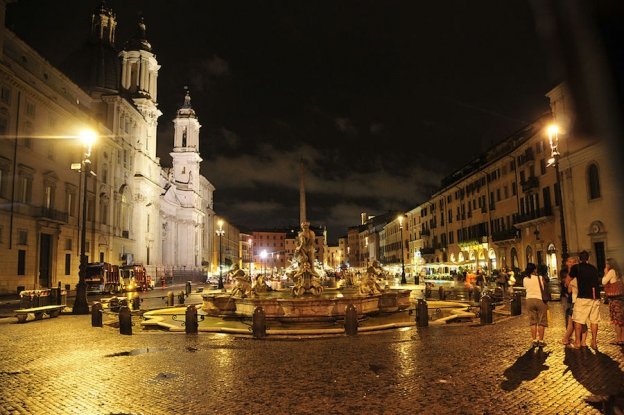
Night adds magic to beautiful cities, and Rome is no exception. In my Roman night, I like to sit on the stone balustrade of Lungotevere degli Altoviti and enjoy the view of the Castel Sant'Angelo softened by velvet lighting. I like to continue walking along the Tiber and reach the Piazza di Spagna via Lungotevere Tor di Nona, Lungotevere Marzio, Via Tomacelli and Via dei Condotti. Once there, I usually have a glass of wine near the Spanish Steps and, if I am not tired, I turn to what is probably my favorite place in Rome: Piazza Forum Traiano, to admire the Roman remains fascinating under the light of the moon.
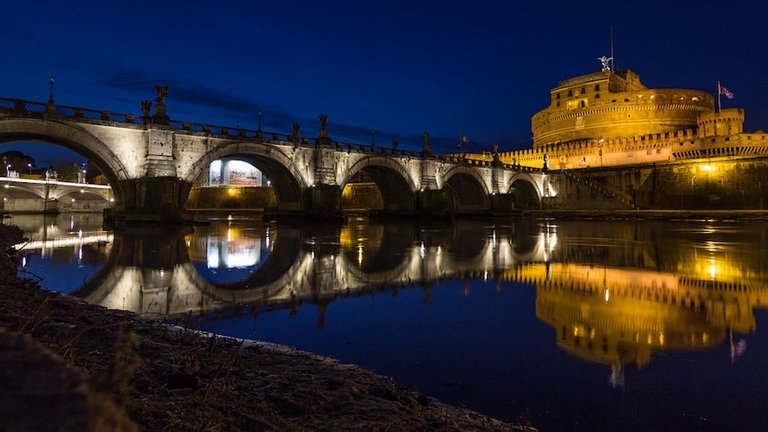
The last time you are in Rome is a year end and a visit to the city with a friend from London. Como era su primera vez in the Ciudad Eterna, decidimos unirnos a una gira por la ciudad por la noche with CiaoFlorence y, a pesar del frío, our divertimos mucho and aprendimos muchas cosas interesantes gracias a nuestra guía apasionada y conocedora. Our encontramos with the group at 21:00. cerca of the main entrance of the Museo del Vaticano and subimos to an autobús of lujo that our llevó a viaje por las calles más famosas of the ciudad; The first parade of the itinerary of Castel Sant'Angelo, originally encircled by Adriano como a mausoleo by el y su familia.
Una vez that el edificio más alto de Roma, este majestuoso castillo fue construido en las orillas del río The oldest author of this book 123 DC. Las cenizas of Adriano fueron colocadas in 139; the only embargo, the duration of the sacred visigodo of Rome, the cenizas of the emperor fueron dispersadas por saqueadores bárbaros. Según la leyenda, the Arcángel Miguel, and the castle of San Angelo, which was built in honor of the end of the year 590, in Fortaleza. The estructura convirtió in a castillo in el siglo XIV y, in tiempos of peligro, proportionate refugio a muchos papas. Castel Sant'Angelo es sin dua uno de los monumentos more famosos of Roma (y uno de favoritos ...) y apareció in libros (por ejemplo, Ángeles and demonios of Dan Brown) y muchas películas populares.
Después of haber admirado este dramático icono romano, our trasladamos on Piazza Venezia, the most famous family of Vittoriano, a mountain of white marble that rises on the square and the circular buildings. Constructed between 1885 and 1911 by the honorable King of Italy, Vittorio Emanuele II, the Vittoriano represents the majesty of the city of Rome and the Central Museum of Risorgimento, the Tumba del soldado del Conconido and the Vittoriano Complement, art and history fantásticas exposiciones. Junto in Piazza Venezia is located on Piazza Foro Traiano - ¡ok, definitivamente es mi lugar favorito in Roma! - that dominated the spectacular Foro de Trajano.
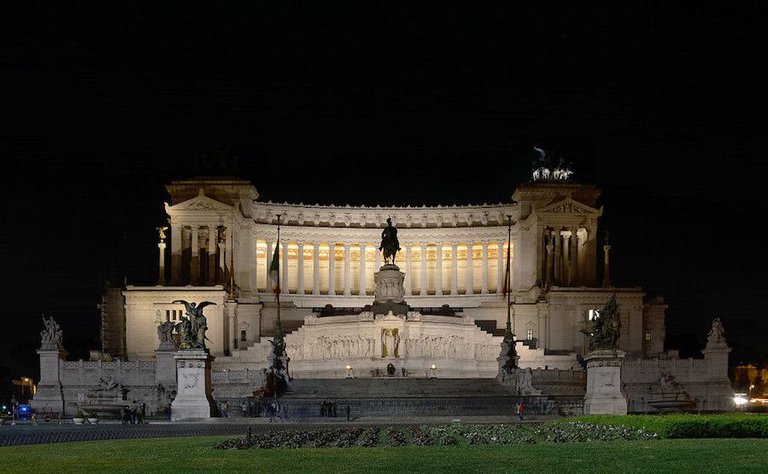
Circus Maximus is only 8-10 minutes from Piazza Venezia. The vast and vast dusty green lawn often used for concerts and events, the first and largest stadium of the cars of ancient Rome measured 621 meters long by 118 meters wide and could accommodate some 250,000 people! Located between the Palatine hills and the Aventine, its origins date back to the 6th century BC and were also occasionally used for gladiatorial combats and processions. The Circus reached its maximum splendor after the Great Fire of Rome (64 AD), when it was rebuilt by Trajano; the last car race took place in 549, almost a millennium after the first race at the Circus.
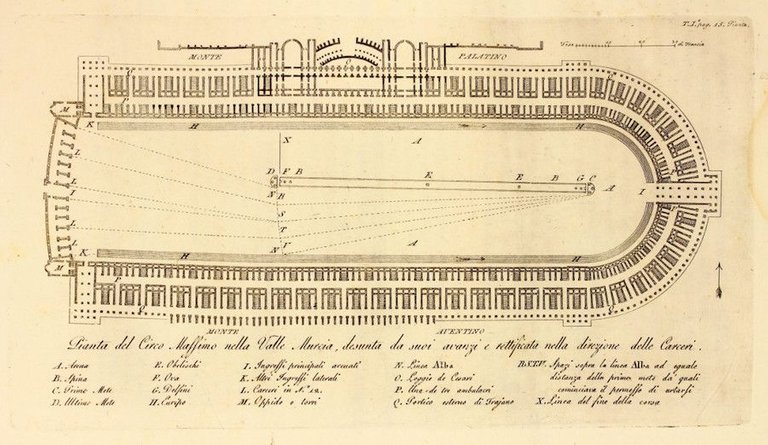
Not far from Cirque Maximus is one of the most popular tourist attractions in the world: the Colosseum. Initially known as the Flavian Amphitheater, this magnificent three-storey building was completed in 80 AD and could accommodate between 50,000 and 80,000 people. What more can I say about the Colosseum? It is the largest amphitheater ever built, still considered as one of the greatest works of architecture and Roman engineering ... In other words, one can not leave Rome without visiting it, it would be like going to Athens and do not visit Acropolis! Right next to this massive amphitheater is the Arch of Constantine, the newest of the three triumphal arches of Rome. It was built at the beginning of the fourth century to celebrate Constantine's victory over Maxence.
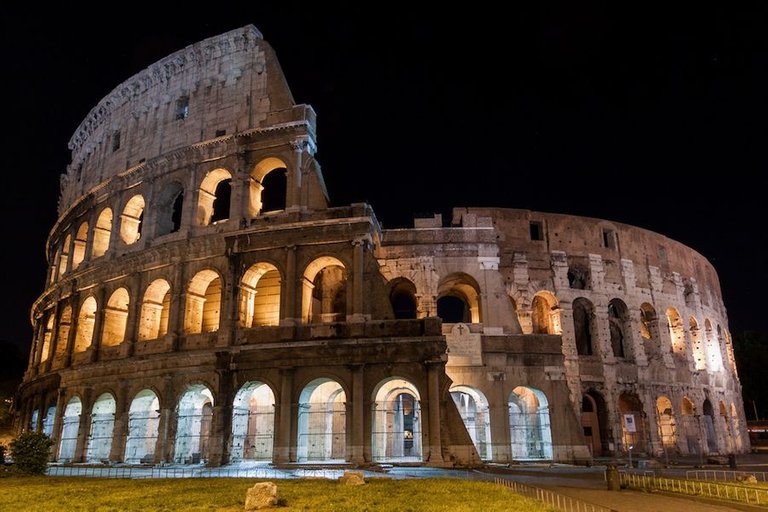
The theater of Marcellus is to the east of the Jewish ghetto. Planned by Julius Caesar - who was assassinated before he could begin construction - he was completed under the name of Augustus and gave the name of his favorite nephew, Marcus Claudius Marcellus. The design of the theater was a model for the Coliseum, which was built shortly after. In the 16th century, a Renaissance mansion (the elegant residence of the Orsini family) was built on the ruins of the theater. Next to the Marcellus Theater is Porticus Octaviae, which leads to the Jewish ghetto: the house of the Roman Synagogue, this beautiful region is literally full of artisan workshops, kosher bakeries and good restaurants. A few years ago I was in Rome with another friend and we had a very good lunch at Il Giardino Romano, located at n. 18, Via del Portico of Ottavia.
From the Jewish ghetto you can easily reach the Tiber Island, a picturesque island shaped like a ship that has long been associated with medicine and healing. Connected to the country by two ancient bridges, the Ponte Fabricio and the Ponte Cestio, in the 3rd century BC. AD, housed the temple of Aesculapius, god of medicine, healing, rejuvenation and doctors. The Tiber Island is about 270 meters long and 67 meters wide at its widest point; where was the temple of Aesculapius, is now the basilica of San Bartolomeo all'Isola (AD 998); Opposite the church is the Fatebenefratelli Hospital. During the summer, the island of Tiber hosts the Festival of the film L'isola del Cinema, whose aim is to support and honor the emerging and known directors.
The penultimate stage of our itinerary was Piazza Navona, one of the most lively and beautiful squares in Rome. Built on the former Domitian stadium, its main attraction is undoubtedly the Fountain of the Four Rivers, a masterpiece by Gian Lorenzo Bernini. Our guide told us about this charming baroque fountain, things I already knew and things I would have liked to know ... You can read what you want, but leaving with a reliable guide allows you to have a better understanding of works of art. In addition to the Fountain of the Four Rivers, Piazza Navona also has two other sources: Fontana del Nettuno (Fountain of Neptune) and Fontana del Moro (both designed by Giacomo della Porta in the second half of the 16th century).
After almost two hours of listening, conversation and touring, we went to St. Peter's Square, the last stop on our itinerary. Designed by Gian Lorenzo Bernini in the mid-17th century, this imposing square resembles a large keyhole and is the ideal entry point for the fascinating Saint Peter's Basilica. The obelisk in the center of the square was transported to Rome by Caligula of Heliopolis; two semicircular colonnades, representing "the maternal arms of the church," surround the square. The magnificent dome of Michelangelo rises above everything, higher than its golden cross, there is only paradise